1. Neural Network Decoders
Neural-network-based decoders rapidly translate error syndromes into optimal correction operations. By training on large sets of syndrome data, these AI decoders learn complex error patterns and often achieve faster and more accurate decoding than traditional algorithms. They map syndromes directly to likely error fixes, reducing computational overhead and keeping pace with growing quantum processor sizes. Neural decoders also continue improving as they see more data, remaining adaptable to new error sources and evolving hardware. This results in quicker, more scalable quantum error correction that outperforms many handcrafted decoding methods in both speed and logical error suppression.
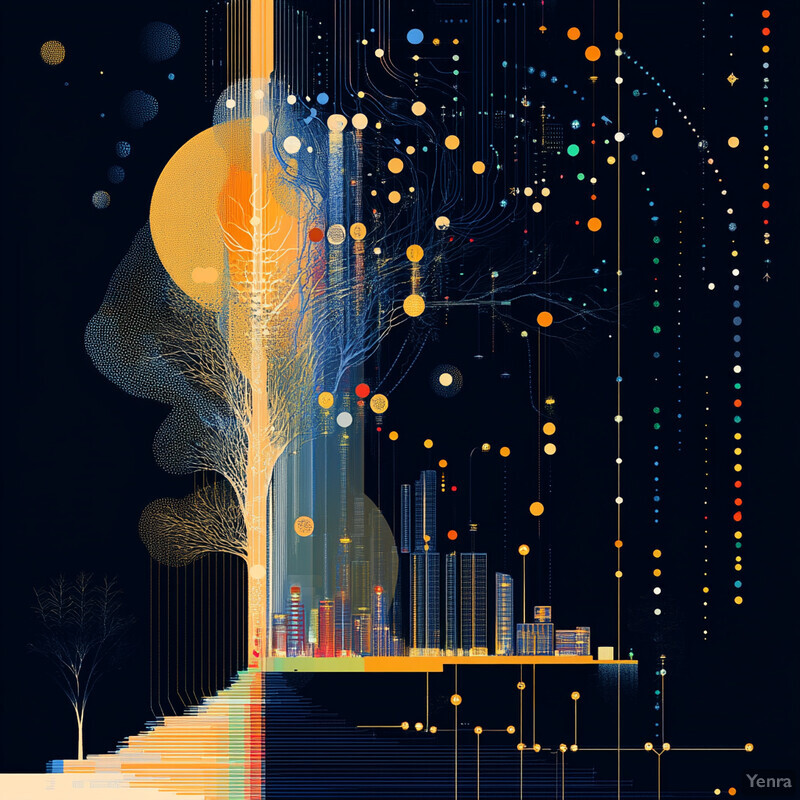
Recent studies show that neural network decoders can surpass conventional decoders in realistic scenarios. For example, a transformer-based neural decoder developed by Google’s Quantum AI team outperformed state-of-the-art decoding (minimum-weight matching) on real Sycamore processor data for surface code distances 3 and 5. It maintained this advantage in simulations up to distance 11 even with complex noise (crosstalk and leakage), highlighting superior accuracy in challenging conditions. Similarly, an independent 2025 experiment found that a neural decoder achieved lower logical error rates than the standard matching decoder on experimental surface-code data, approaching the performance of an optimal decoder. These results underscore that machine learning can learn decoding strategies beyond human-designed heuristics, yielding higher fidelity logical qubits in today’s quantum devices.
2. Reinforcement Learning for Decoder Optimization
Reinforcement learning (RL) offers a dynamic approach to improving quantum decoders. Instead of a fixed decoding rule set, an RL-based decoder agent learns via trial-and-error, adjusting its strategy based on feedback (rewards for successful error correction). Over many iterations, the agent discovers more effective decoding policies that lower logical error rates. This adaptive process lets RL decoders handle diverse error models and changing noise conditions without manual retuning. In essence, the decoder “learns” the best actions to correct errors, refining its performance over time. The result is a policy-driven decoder that can flexibly optimize error correction on the fly, often outperforming static decoders especially when the error environment is complex or non-stationary.
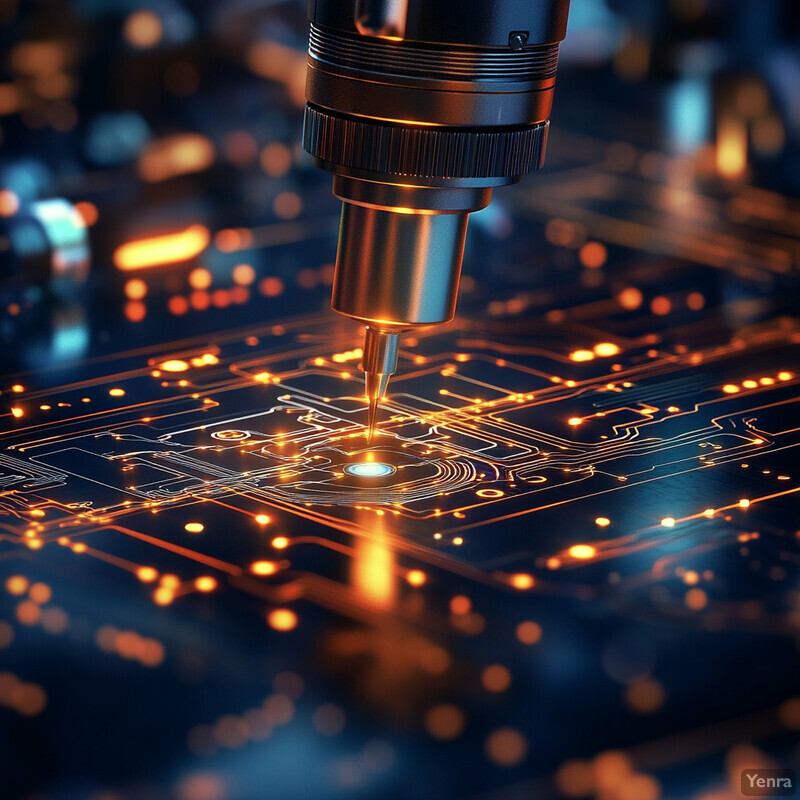
Reinforcement learning methods have demonstrated notable gains in quantum error correction. In one 2024 study, researchers introduced an RL-inspired calibration of decoder “priors” (error rate assumptions) to minimize logical error rates. Applied to Sycamore superconducting qubits, this approach improved decoding accuracy by 16% for a repetition code and ~3.3% for a surface code over the leading non-RL method. RL has also been used to directly train decoders: a deep RL agent learned to decode the toric code nearly up to its theoretical error threshold (~11% physical error rate) by being rewarded only for successful logical recovery. Such agents require no prior noise model knowledge and can adapt to various error patterns. These successes indicate that RL can autonomously discover high-performance decoding strategies—approaching optimal thresholds and adapting to drift—beyond what fixed algorithms achieve, heralding more robust error correction in practice.
3. Automated Code Design
Machine learning is expediting the discovery of new quantum error-correcting codes (QECCs). Instead of laboriously designing codes by hand, AI algorithms (such as genetic searches or reinforcement learning agents) can explore huge code spaces to find novel codes with superior properties—higher error thresholds, larger minimum distances, or lower overhead. By evaluating many candidate codes quickly, these tools identify promising code structures that human intuition might miss. Automated design has uncovered non-intuitive codes and encoding schemes tailored to specific noise biases or hardware constraints. This accelerates innovation in QEC, yielding codes that achieve better error suppression or use fewer resources than traditional codes. Ultimately, AI-driven code discovery is expanding the “zoo” of QECCs and optimizing them for practical quantum computing needs.

Recent advances illustrate the power of AI in finding and optimizing QEC codes. A 2023 study gamified code discovery with reinforcement learning, allowing an agent to construct codes with arbitrary target criteria. Using this approach, the agent found a $[[17,1,3]]$ CSS code that outperformed well-known codes under biased noise—despite having a lower distance, it protected the logical qubit better than surface or XZZX codes in that noise regime. This highlights how AI can identify codes ideally suited to specific error characteristics. Another project in 2024 employed an RL agent to simultaneously discover quantum codes and their encoding circuits adapted to given hardware connectivity and noise. The agent autonomously searched beyond stabilizer-code conventions, yielding code and encoder pairs optimized for a target platform. These examples show that AI can not only reproduce known codes but also uncover entirely new QEC paradigms and tailor them to real-world conditions, significantly expanding the landscape of effective error-correcting codes.
4. Noise Modeling and Channel Identification
AI techniques can create detailed models of the noise affecting quantum hardware by learning from experimental data. Traditional noise models (e.g. simple depolarizing or Pauli error rates) often miss complex realities like crosstalk, non-Markovian drifts, or spatially correlated errors. Machine learning can absorb large volumes of calibration and syndrome data to capture these subtleties. The result is a more faithful noise model or error channel description specific to a given device. Such models incorporate correlated error patterns and rare events that classical heuristics struggle to include. With a better understanding of the noise, error correction can be tuned more effectively—decoders can be informed of realistic error probabilities and patterns, leading to higher overall fidelity. Essentially, AI enables “learning” the noise environment itself, yielding a noise model that evolves with the device and improves QEC performance.
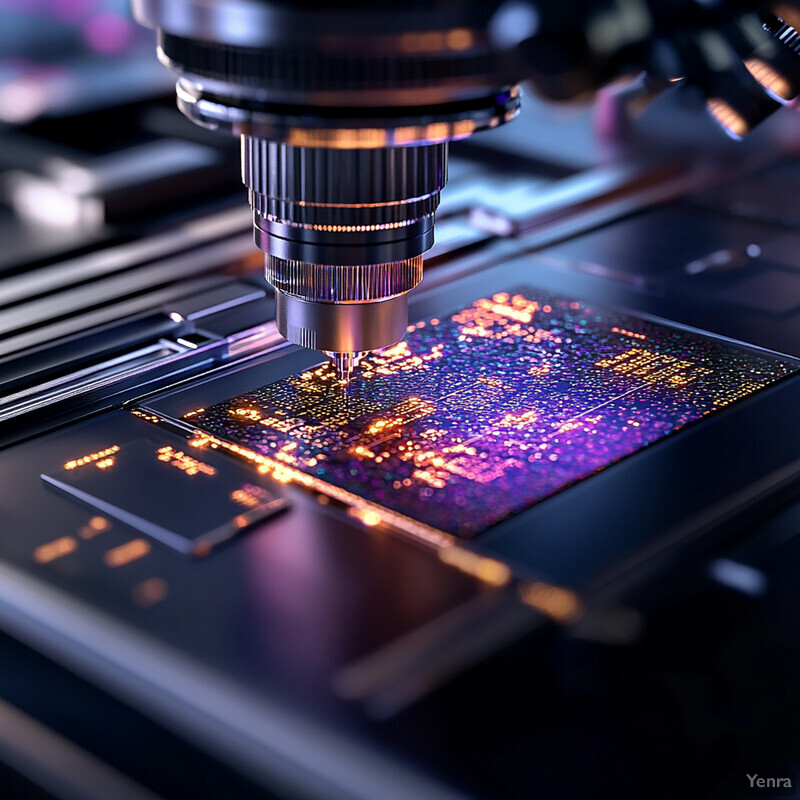
Researchers have demonstrated machine learning’s ability to characterize complex quantum noise beyond standard techniques. In 2024, one team introduced a reinforcement learning approach to learn the noise process on a superconducting qubit chip. Their RL agent flexibly reproduced various noise patterns (including non-Markovian and correlated errors) that conventional methods like randomized benchmarking approximate poorly. The learned noise model was validated in both simulations and tests on real hardware, confirming the agent’s superior fidelity in capturing the true error dynamics. In another example, scientists applied machine learning to neutral-atom qubits, using experimental data to estimate the device’s noise parameters and even suggest corrections. Their 2024 study used one ML model to fit noise rates and an adaptive algorithm (based on reinforcement learning) to design an error-mitigating control pulse. The combined approach reduced the effective error impact without detailed prior knowledge of the noise. These cases show that AI can identify intricate noise characteristics (and counteract them) in ways that static models cannot, leading to more realistic error channels and better-targeted QEC strategies.
5. Adaptive Error Correction Protocols
AI enables error correction protocols to become adaptive—changing on the fly in response to predicted error patterns or device drift. Instead of using a fixed QEC scheme at all times, an AI system can monitor error syndromes and other signals to anticipate future errors or performance degradations. The error correction procedure (e.g. choice of code, frequency of syndrome measurements, or decoding strategy) is then adjusted in real-time to address the evolving situation. For example, the AI might switch to a different code if the current noise profile changes, or increase error-check frequency if error rates spike. This adaptivity ensures high fidelity even under non-static noise conditions, as the QEC protocol “learns” and responds to the current state of the quantum hardware. Such predictive, closed-loop adjustment can maintain effective error suppression without the need for frequent manual re-calibration.
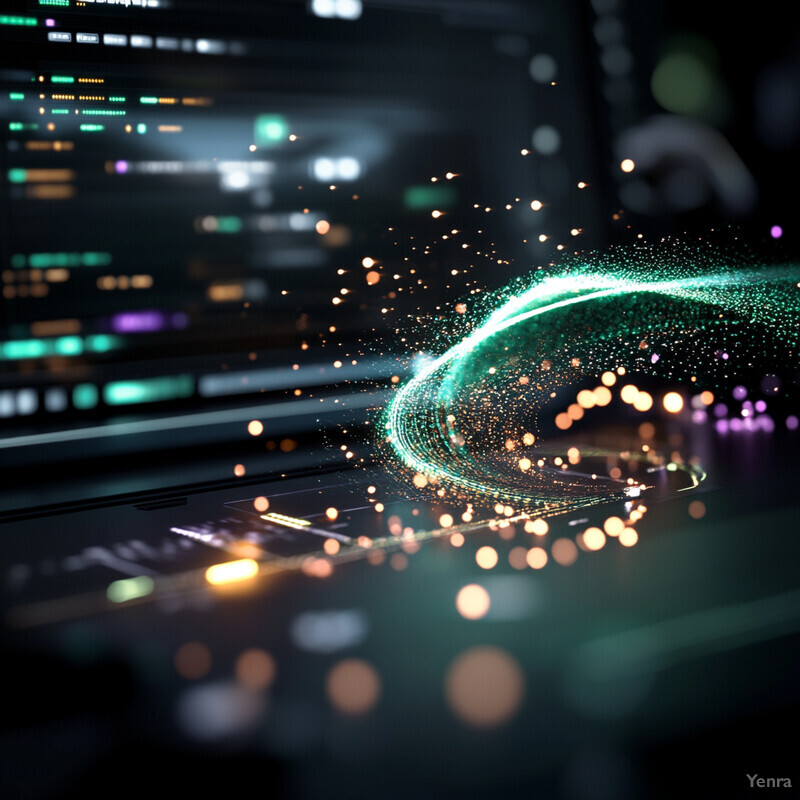
A concrete illustration of adaptivity is an approach that tailors the error correction strength to each qubit’s daily performance. In 2025, researchers analyzed calibration data from IBM’s 127-qubit devices and found significant day-by-day fluctuations in individual qubit error rates. They developed a simple adaptive protocol: assign each qubit the minimum error-correcting code distance needed to reach a target logical error rate (e.g. $10^{-6}$), and exclude qubits that are too error-prone for even maximum code size. Tested on 12 days of data, this per-qubit adaptation preserved 85–100% of qubits for use while reducing the physical qubit overhead by over 50% compared to a static, one-size-fits-all code distance. The overhead savings reached up to 71% on some devices with this strategy, all while maintaining the same logical error target. This demonstrates that dynamically adjusting error correction parameters to the hardware’s current state can dramatically improve resource efficiency. More generally, reinforcement learning studies (e.g. Hussain et al., 2022) have shown that decoder agents can continually refine their policies as error statistics shift. Such AI-driven adaptivity keeps quantum error correction robust under time-varying noise and system calibrations.
6. Dimension Reduction for Complex Syndromes
Quantum error syndromes can be extremely high-dimensional data (many qubits and checks), which makes decoding computationally intensive. AI offers tools to compress or reduce this complexity while retaining the essential information about errors. Techniques like principal component analysis (PCA), autoencoders, or other manifold learning methods can distill large syndrome vectors into a smaller set of relevant features. By focusing only on the most informative features, decoding algorithms become faster and more tractable. This dimensionality reduction can also reveal underlying structures in the error data—for instance, identifying a few dominant error modes or correlations that explain most of the syndromes. Overall, AI-driven syndrome compression simplifies the decoder’s task, speeding up error identification and potentially improving accuracy by filtering out noise in the syndrome data itself. It turns complex webs of error information into clearer signals that are easier to act upon.
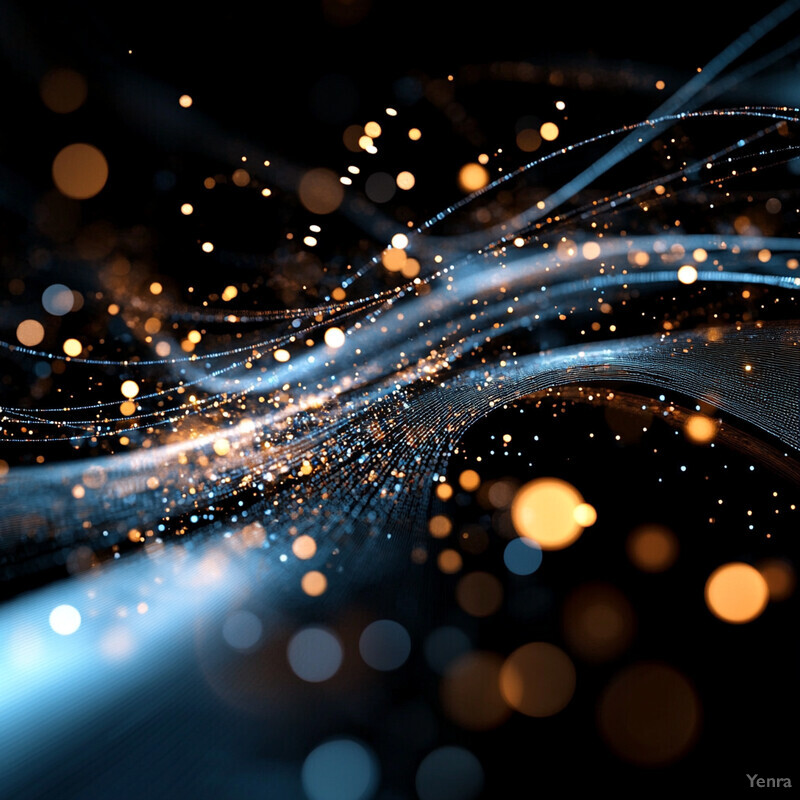
Emerging research indicates that machine learning can effectively simplify syndrome data. Unsupervised learning approaches, in particular, help identify patterns and reduce dimensionality in error syndromes. For example, applying PCA or t-SNE (t-distributed stochastic neighbor embedding) to syndrome outcomes can highlight the dominant error axes or clusters, allowing decoders to focus on key error modes. This approach has been suggested as a way to visualize and interpret complex error models—by plotting syndrome data in a reduced feature space, one can often spot correlated error groups that were not obvious before. Moreover, deep learning models like autoencoders have been shown to learn compressed representations of quantum states for error correction. In a 2023 study, a quantum autoencoder was trained to detect and correct errors in a quantum memory, effectively learning an optimal compression of the logical information and its noise into a latent space. Not only did it autonomously correct spatially correlated errors and qubit loss, but it also discovered new logical encodings adapted to the given noise. These results confirm that reducing the dimensionality of syndrome data (or encoded states) can maintain, or even improve, error-correcting performance while substantially cutting down the data that decoders must process.
7. Learning-Based Threshold Estimation
Machine learning can assist in estimating the error threshold of quantum codes more efficiently than brute-force simulations. The error correction threshold is the critical physical error rate below which a code can, in theory, suppress errors indefinitely by increasing its size. Traditionally, finding a code’s threshold involves massive Monte Carlo simulations at various error rates and code distances. Learning-based approaches instead train models (e.g. neural networks or regressors) on sample simulation data to predict whether a given noise level is above or below threshold. These models can interpolate between simulated points and rapidly hone in on the threshold value. The benefit is quicker feedback on code viability—researchers can get approximate threshold values without exhaustive enumeration. In practice, this means faster evaluation of new codes and error mitigation schemes, guiding experiments to operate in the below-threshold regime. ML thus accelerates the otherwise time-consuming process of mapping out QEC performance landscapes.
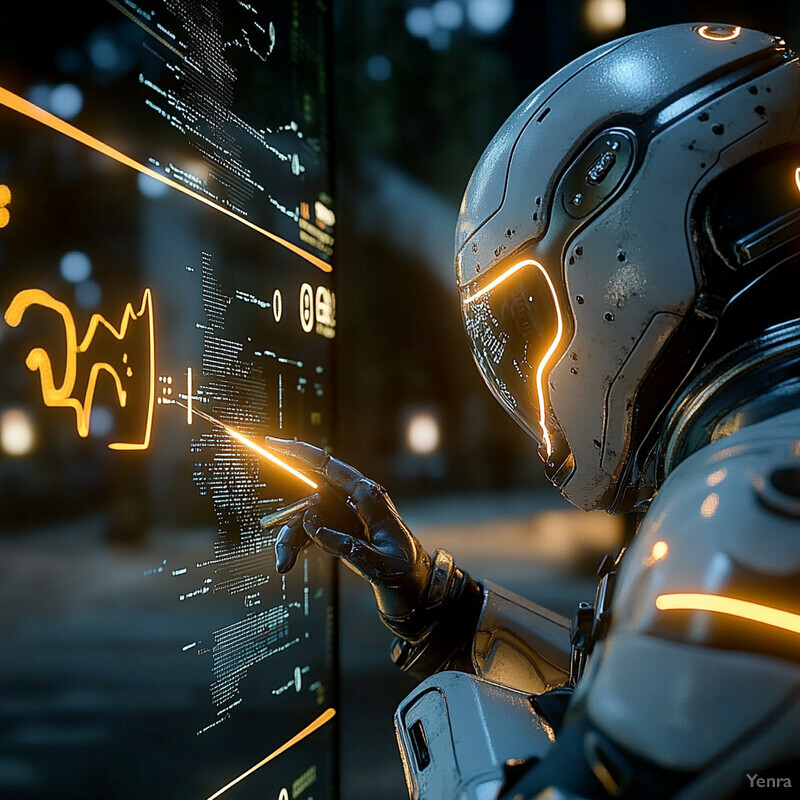
Recent experiments and simulations underscore the importance of accurate threshold estimation and hint at ML’s role in speeding it up. In early 2023, Google’s Quantum AI group achieved a milestone by demonstrating a surface code logical qubit that beat the error rate of physical qubits—an empirical confirmation of operating below the threshold. Using a distance-5 and distance-7 surface code with real-time decoding, they observed logical error rates about 2.4× lower than the best physical qubit, at a physical error per cycle of ~0.14%. This result implies a surface-code threshold around the few 0.1% level, consistent with theoretical expectations (~1% for ideal surface code) and provides a target for ML models to predict. On the simulation side, advanced decoders aided by machine learning have effectively reached threshold-level performance. A neural decoder tested on Sycamore’s noise model approached the accuracy of a maximum-likelihood decoder, indicating it was correcting errors nearly as well as theoretically possible up to the threshold regime. Going forward, researchers are integrating learning algorithms to interpolate such results and pinpoint threshold transitions more quickly. By training on partial data (small codes or limited samples), an ML model can estimate where increasing code size starts yielding exponential error suppression, guiding where the threshold likely lies without exhaustive simulation. This approach offers a faster route to assess whether a new code or noise mitigation technique is viable in the fault-tolerant regime.
8. Hybrid Classical-Quantum Control Loops
Effective quantum error correction demands a tight feedback loop between quantum hardware and classical processing, and AI can orchestrate this loop. In a hybrid classical-quantum control scheme, classical algorithms (potentially powered by AI) process syndrome measurements and decide corrective actions in real-time, then instruct quantum hardware accordingly—before the quantum state decoheres. AI’s pattern-recognition and decision-making speed can significantly reduce decoding latency, ensuring that error corrections are applied almost as soon as errors occur. This synergy plays to the strengths of each domain: quantum hardware for storing and processing qubits, and AI-enhanced classical hardware for swift, intelligent error analysis. By coordinating the two, quantum error correction becomes an active process that continuously stabilizes qubits. In practice, this could involve custom classical co-processors (FPGAs, GPUs) running AI decoders that meet the stringent timing requirements of quantum circuits. Overall, AI in the control loop helps maintain the delicate quantum state by making the entire error-correction cycle more seamless and responsive.

A recent breakthrough demonstrated the power of integrating fast classical decoding with quantum operations. In late 2024, Google’s team implemented a real-time decoder in their surface-code quantum memory, achieving an average decoding latency of only 63 μs per cycle at distance-5. This ultra-fast feedback loop (syndrome extraction -> decode -> correction) allowed them to run up to one million QEC cycles with the logical qubit still outperforming a physical qubit. The classical decoder—running on an FPGA—could keep up with the 1.1 μs cycle time of the quantum device, underscoring the need for high-speed control. AI methods are poised to further enhance such setups. Industry researchers note that strict latency requirements (tens of microseconds or less) are a major challenge, and that AI’s ability to recognize complex error patterns quickly makes it a promising tool for meeting these deadlines. For instance, NVIDIA and partners are exploring AI-driven decoders on specialized hardware to handle the pattern-matching task in time frames that standard algorithms struggle with. By deploying AI on classical processors tightly coupled to the quantum system, the error-correction feedback loop can be made both fast and intelligent—catching and correcting errors in real-time, even as quantum devices scale and error patterns become more intricate.
9. Automated Fault-Tolerant Gate Design
AI can aid in designing quantum logic gates and circuits that inherently limit error propagation, a key aspect of fault tolerance. In fault-tolerant quantum computing, even if errors occur, circuits are structured so that they do not cascade uncontrollably. Automating the search for such circuits using AI helps navigate the complex design space of fault-tolerant gadgets (like state preparation routines, magic state distillation circuits, or flag qubit schemes). Machine learning or heuristic search algorithms can optimize multi-qubit gate sequences under constraints like minimal depth or ancilla count, while ensuring errors remain correctable. The resulting gate designs often have lower overhead and error rates than manual designs. For example, AI might find a gate implementation that uses fewer operations or cleverly timed pulses that reduce the chance of correlated faults. By systematically exploring possibilities, AI-driven design produces fault-tolerant operations that are both efficient and robust, ultimately reducing the resource cost for quantum algorithms to reach the error-corrected regime.

We are seeing first examples of AI-optimized fault-tolerant circuit components. One recent advance is an automated method to synthesize fault-tolerant state preparation circuits for arbitrary CSS codes. Researchers developed a tool that takes a target logical state and produces an optimized circuit (using ancillas and error-detecting steps) that prepares this state with minimal gate count and depth. This automation, reported in 2023, yields circuits for states like logical 0 or magic states that are shorter and simpler than previous hand-crafted versions, while still guaranteeing fault tolerance. In another approach, a 2024 study leveraged a “noise-adaptive dissipative quantum neural network” to design fault-tolerant error correction routines. This AI-driven framework mitigated error propagation by actively shaping the error-correcting circuit: it prepared special entangled ancilla states that reduce propagation and adjusted operations to cut idle delays. Compared to conventional techniques, the AI-designed procedure required fewer resources and achieved higher final fidelity for error rates up to $10^{-4}$. These examples highlight that AI optimizers can juggle multiple factors—circuit size, noise characteristics, and fault-tolerance criteria—to produce gate designs and protocols that meet error-correcting needs with significantly improved efficiency.
10. Decoding on NISQ Hardware
Near-term quantum devices (so-called NISQ devices) have high error rates and idiosyncratic noise quirks that challenge standard decoders. AI offers a way to tailor decoding algorithms specifically to a given quantum processor’s observed error profile, squeezing out better performance than one-size-fits-all decoders. By continuously learning from a device’s syndrome data and calibration logs, an AI decoder can update its model of the noise in real time. This leads to decoders that are hardware-aware—for example, knowing that qubit 5 fails more often or qubit 7 and 8 have correlated errors—and thus output more accurate corrections. In practice, this might mean training a neural decoder on a mix of simulated and real syndrome data from a particular chip, or using online learning as the quantum computer runs. The end result is more reliable error correction on current noisy hardware, extending qubit lifetimes and improving experimental outcomes, even though full fault tolerance isn’t reached yet. This approach essentially treats the decoder as part of the NISQ hardware calibration process.
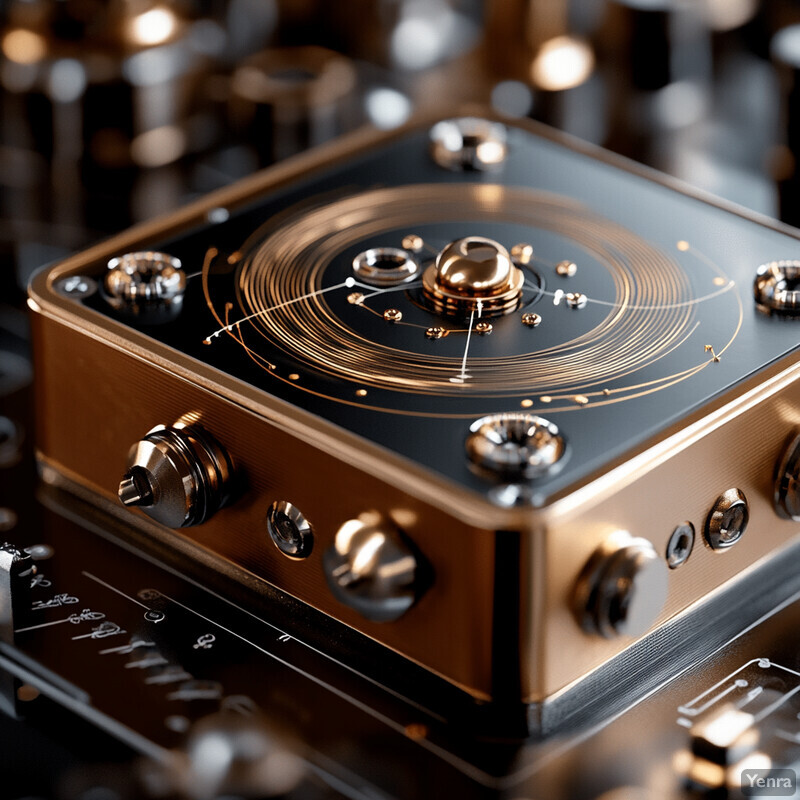
Experiments have shown clear gains when decoders are customized to the device. In a 2025 study, researchers trained a neural network decoder on both simulated and experimental data from Google’s superconducting qubits and found it significantly outperformed the baseline decoder (minimum-weight perfect matching) on those same qubits. Notably, when applied to Google’s 2023 surface code experiment data, the neural decoder achieved logical error rates lower than matching did, coming very close to the performance of a maximum-likelihood decoder. This demonstrates that incorporating the real noise characteristics of the device (through training on its data) can yield a decoder better tuned to that hardware. Another highlight is the ability of AI decoders to adapt quickly. The DeepMind/Google “AlphaQubit” decoder, for instance, was first trained on approximate simulated noise and then fine-tuned with a limited set of real qubit error samples, allowing it to handle complexities like crosstalk and leakage present on the actual chip. This fine-tuning required far fewer physical runs than would normally be needed to characterize the device, yet it enabled the decoder to extract better performance from the NISQ hardware. These successes underline that AI-based decoders, by learning a device’s unique error “fingerprint,” can stabilize NISQ qubits more effectively—improving quantum experiment fidelities in the pre-fault-tolerant era.
11. Resource Estimation and Allocation
Designing a quantum error correction strategy involves trade-offs between various resources—number of physical qubits, gate overhead, circuit depth, and the target logical error rate. AI can help navigate these trade-offs quickly by evaluating many configurations and finding efficient solutions. In practice, this means an AI system can suggest which error-correcting code or what code distance achieves a desired reliability with minimal qubit count, or how to distribute a limited number of qubits among error correction and computation optimally. By learning the complex relationship between QEC parameters and performance, the AI can function as a smart assistant to engineers, recommending resource allocations (like how many ancillas to use, which qubits to devote to encoding vs. spare, etc.) that meet error targets at lowest cost. This rapid assessment of code efficacy vs. resource expense is especially valuable given the extreme resource demands of fault tolerance. Ultimately, AI-guided resource optimization means we can reach lower logical error rates with fewer qubits and operations than brute-force methods might use, bringing practical quantum computing closer.
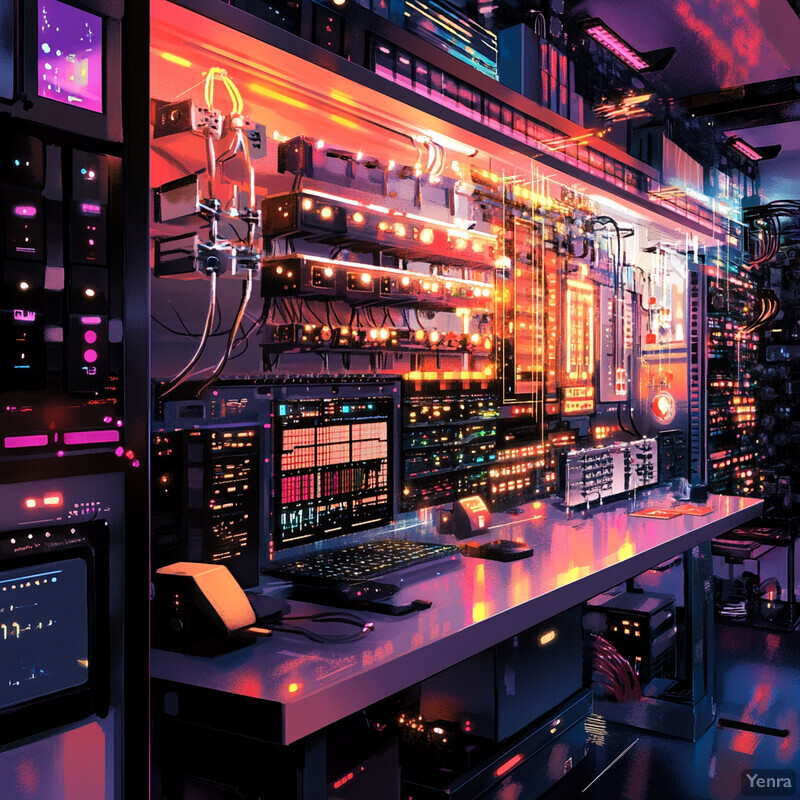
A concrete example of AI-assisted resource allocation is the adaptive code approach developed by Das and Ghosh (2025). Their strategy intelligently adjusts the code distance for each qubit based on its error rates to minimize overhead. Instead of using a uniform (and overly conservative) code distance for all qubits, their method assigns just enough redundancy to each qubit to achieve a $10^{-6}$ logical error rate, and it outright omits qubits that are too error-prone to help. This data-driven allocation slashed the number of physical qubits needed by over half, compared to a homogeneous allocation, while still hitting the error target. In another instance, researchers used a quantum neural network approach to optimize a bosonic error-correcting code, essentially balancing error suppression against the difficulty of implementing the code. The AI-driven scheme reduced the required squeezing (an expensive resource in bosonic codes) and number of operations, yet maintained effective error correction at the desired threshold level. This was achieved by simultaneously tuning multiple parameters of the error correction process via deep learning. These cases illustrate how AI can weigh competing objectives (error rate vs. qubit count vs. operation complexity) and find Pareto-optimal QEC configurations. By automating resource estimates and allocation decisions, AI ensures that every extra qubit or gate added to the system meaningfully boosts error protection, avoiding waste and maximizing the payoff of precious quantum resources.
12. Ensemble Methods for Robustness
Instead of relying on a single decoding algorithm, ensemble approaches combine multiple decoders to leverage their complementary strengths. Just as ensemble methods in classical machine learning (like random forests or committee of models) often improve accuracy, an ensemble of quantum decoders can yield more robust error correction. One way to implement this is to have several decoders (which might be of different types, e.g. one neural network, one belief-propagation, one matching decoder) analyze the same syndrome and then “vote” or be blended via a meta-decoder. This reduces the chance of a pathological miss by any single decoder, as others in the ensemble can cover its weakness on certain error patterns. Ensemble decoding can also address varying error regimes—for instance, one decoder might excel at correcting sparse random errors while another handles bursty correlated errors, and together they cover a broader spectrum. Overall, ensemble methods improve reliability and lower logical error rates by pooling the decision-making of multiple decoders, making the QEC performance less sensitive to the quirks of any single algorithm.
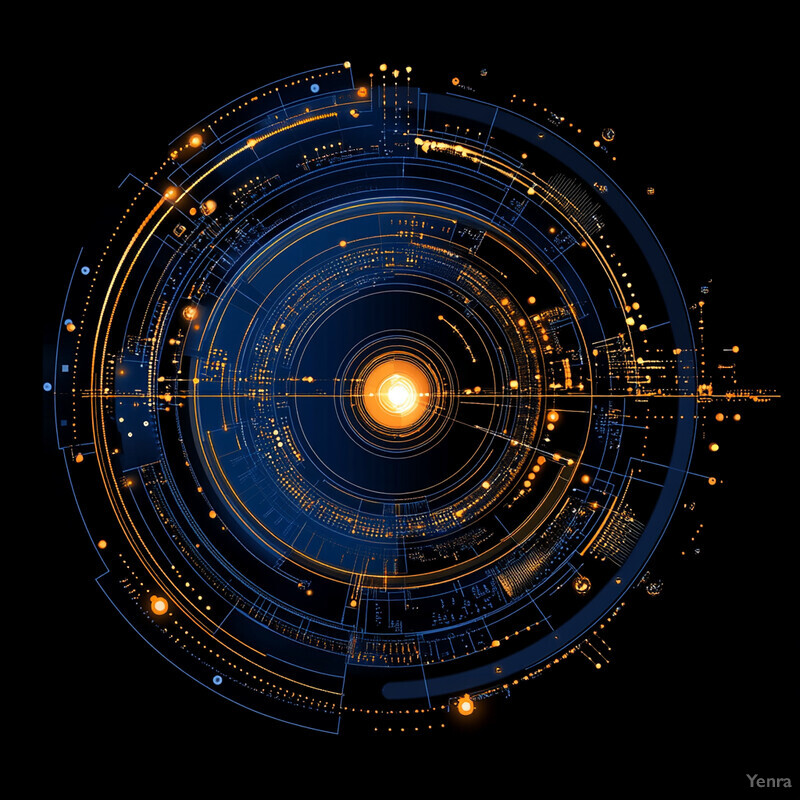
The benefits of decoder ensembles have been demonstrated in recent research. In December 2023, a study introduced an ensemble decoder for the surface code that amalgamates the advantages of various decoders. By combining multiple decoding strategies, this ensemble achieved lower logical error rates than any individual decoder alone and could successfully decode multiple simultaneous errors that would stump a single decoder. In essence, when one decoder mis-corrected an atypical syndrome, another in the ensemble often provided the right interpretation, making the overall scheme more robust. Another 2025 work on quantum LDPC codes proposed “AutDEC,” an ensemble of belief-propagation decoders enhanced by code automorphisms. Each decoder in the ensemble was fed a permuted version of the syndrome (reflecting a symmetry of the code), and their outputs were aggregated. This approach mitigated failures caused by specific trapping sets in the Tanner graph, yielding accuracy comparable to more resource-intensive decoders but with lower runtime. These examples confirm that ensemble decoding can outperform single-decoder approaches, particularly by addressing error cases that are challenging for one decoder type. As quantum hardware and error environments diversify, such hybrid decoders – effectively an AI committee voting on error correction – provide a pathway to more dependable QEC performance across all scenarios.
13. Error Classification and Clustering
Machine learning can be used to classify and cluster quantum error events, providing deeper insight into the nature of the errors. By analyzing syndrome data, ML algorithms can group similar error patterns together, effectively labeling distinct “error classes.” For instance, one cluster of syndromes might correspond to single-qubit gate errors, another to correlated two-qubit crosstalk events. Such clustering simplifies the problem of error correction by allowing the decoder (or engineers) to treat each class with a tailored strategy. It also helps pinpoint dominant error sources: if one class of error syndromes is very frequent, it likely points to a specific noise mechanism that can then be addressed by hardware adjustments or targeted error mitigation. In short, unsupervised learning on syndrome data turns a mass of raw information into a clearer picture of a device’s error landscape, highlighting patterns and recurring error types that would otherwise be obscured by noise. This insight can guide both better decoding algorithms (specialized per error class) and hardware improvements (fixing the root cause of prevalent error classes).
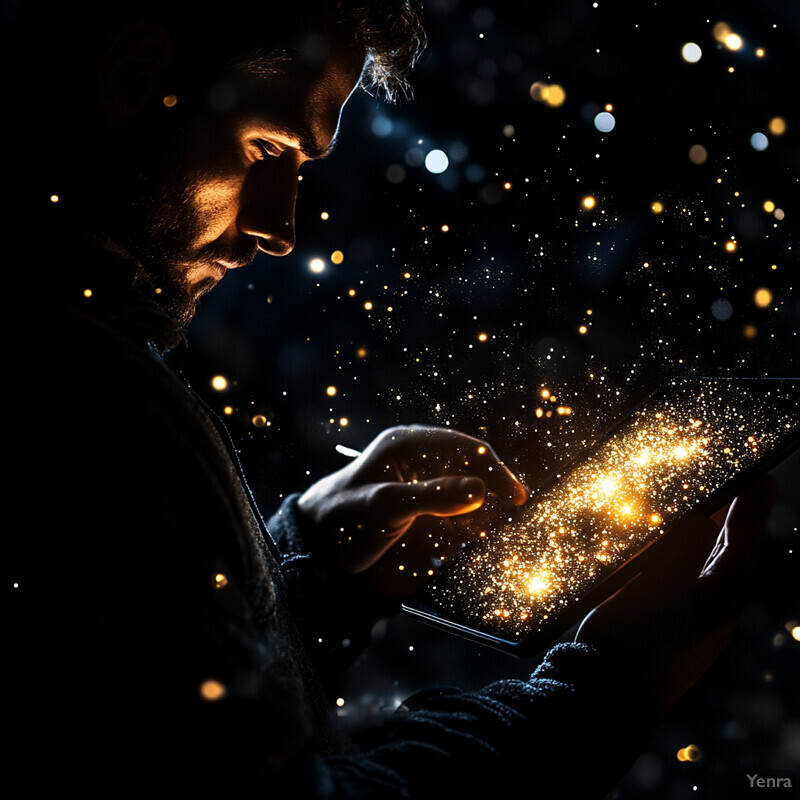
The potential of unsupervised learning in understanding quantum errors has been noted in recent literature. A comprehensive 2024 review pointed out that clustering and dimensionality reduction techniques can uncover hidden correlations in quantum noise that traditional analysis might overlook. By grouping syndrome outcomes into clusters, one can identify, for example, that certain qubits fail together (suggesting crosstalk) or that specific sequences of errors repeat regularly (hinting at a systematic issue). In practice, this approach was similar in spirit to what Google’s team did (with classical analysis) when examining long experiments: they observed that rare correlated error events — essentially simultaneous failures of multiple qubits — occurred about once every $10^9$ cycles, limiting the surface code performance. An ML-based classification could automatically flag such outlier events as a distinct error class. Likewise, if some qubit consistently shows up in one cluster of high-frequency errors, that qubit might be singled out as a “bad actor” for potential recalibration or exclusion. Although much of this work is still in simulation or data-mining stages, the concept is clear: by letting AI cluster syndrome data, researchers can simplify error models into a few classes and then tackle each class with focused tactics. This data-driven error taxonomy ultimately improves error correction by ensuring the strategy fits the error type, and it informs hardware development by revealing exactly what kinds of errors dominate a given device.
14. Bayesian and Probabilistic Reasoning
Bayesian inference and probabilistic models can significantly improve quantum error correction by updating error beliefs in real time. In a Bayesian decoder, prior assumptions about error rates are continuously refined (“posterior” updates) as new syndrome data comes in. This means the decoder’s internal model of which errors are likely is always context-aware—if a certain error syndrome pattern starts appearing more frequently, the Bayesian decoder will assign higher probability to the corresponding error and correct accordingly. Probabilistic reasoning also enables decoders to handle uncertainties, such as ambiguous syndromes, in a principled way by weighing different error hypotheses according to their likelihood. Overall, incorporating Bayesian methods makes decoding more accurate and adaptive, especially in environments where error rates drift or vary over time. These techniques effectively allow the decoder to learn from each measurement and to “expect” the types of errors that are currently happening, leading to more context-sensitive and robust error correction decisions.

The advantages of Bayesian error tracking have been demonstrated in quantum error correction research. A 2023 study on photonic fault-tolerant computing employed a Bayesian approach to monitor errors during the generation of a large entangled graph state. As fusions (entangling operations) were attempted, their non-ideal outcomes would corrupt certain stabilizers; using Bayesian inference, the protocol assigned error probabilities with strong statistical evidence to specific qubits in the final state. This on-the-fly Bayesian update enabled much more realistic error simulations and adaptive decoding of the syndrome, since the decoder knew which regions of the graph were most likely damaged by fusion failures. In a hardware context, Google’s 2024 decoder calibration (mentioned earlier) can be viewed through a Bayesian lens: they treated the physical error rates as priors and then, via an RL-inspired algorithm (which inherently performs a form of stochastic gradient ascent), adjusted those priors to better fit the observed syndrome outcomes. The result was a refined probability model that, when used in decoding, yielded higher accuracy than the uncalibrated model. More formally, this is akin to performing Bayesian updating on error rate parameters based on experimental data. These examples underscore that incorporating probabilistic reasoning—whether through explicit Bayesian formulas or machine-learning analogues—keeps decoders optimally informed. By continuously learning the error probability distribution, Bayesian decoders remain effective even as conditions change, a trait crucial for maintaining low logical error rates in practice.
15. Accelerating Simulation Studies
Simulating quantum error correction (e.g. to calculate logical error rates or test new codes) is computationally heavy, but AI can act as a surrogate to speed up these studies. Instead of brute-force Monte Carlo simulations for every scenario, one can train a neural network or other model on a sample of simulation data, and then use that model to predict outcomes across the parameter space much faster. For instance, a neural network might learn to predict the logical error rate of a code given the physical error rate and code parameters, bypassing the need to simulate thousands of error trials at each point. This dramatically reduces runtime for benchmarking different codes or error mitigation strategies. Additionally, AI models can extrapolate beyond the simulated range, hinting at trends (like threshold behavior) without requiring exhaustive data. By accelerating the iterative cycle of “propose code -> simulate -> evaluate,” machine learning enables researchers to explore more ideas in less time, ultimately speeding up the development of better QEC schemes.
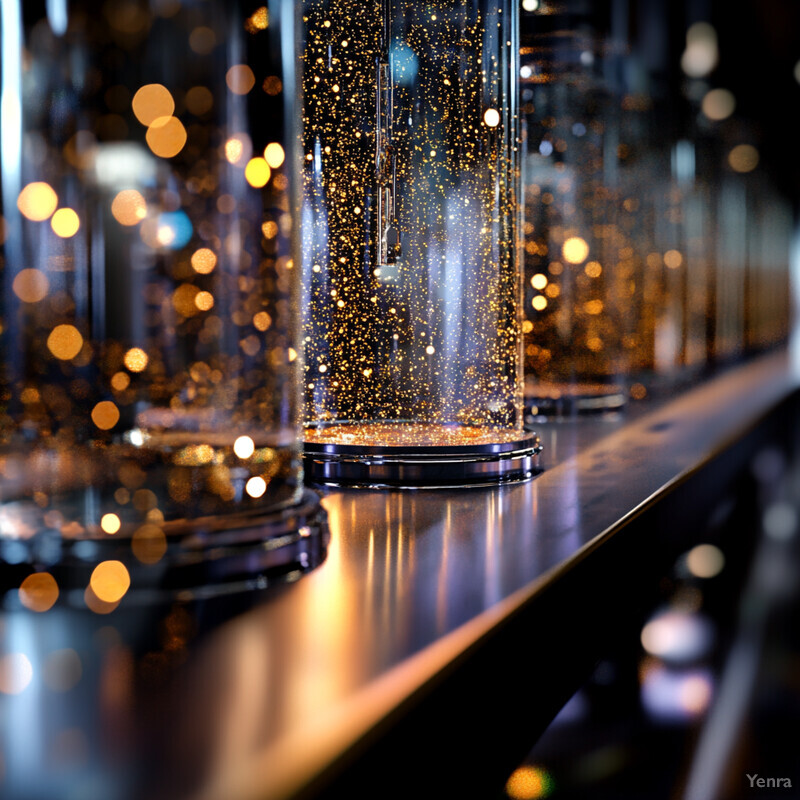
The use of AI surrogates for QEC simulations is illustrated by some remarkable scaling results. In 2023, a team led by Gicev et al. trained an artificial neural network decoder to handle surface codes of very large size, demonstrating decoding for code distances exceeding 1000 (over 4 million physical qubits) in simulations. This feat—by far the largest ML-based decoding demonstration to date—was possible because the neural decoder generalizes the decoding task without having to simulate every possible error event on such a gigantic lattice. It effectively compresses the information from 50 million random training samples into a model that can rapidly predict corrections for new errors, something infeasible with explicit simulation alone. On the experimental side, the AlphaQubit work (2024) showed that a decoder network could be trained on approximate (simulated) data and then fine-tuned with a relatively small set of real quantum data to achieve high accuracy. By relying on the neural model’s predictive power, they greatly reduced the amount of actual quantum experiment time needed to evaluate and optimize the decoder’s performance on hardware. In essence, the simulation burden was offloaded to an AI model. These examples underscore how learning-based approaches accelerate the evaluation of QEC strategies—enabling exploration of extremely large codes and rapid tuning of decoders—far beyond what brute-force simulation could accomplish in a reasonable time.
16. Informed Qubit Layout Optimization
The physical layout and connectivity of qubits on a quantum chip strongly influence error rates—neighbouring qubits often suffer correlated errors (like crosstalk), and sparse connectivity can limit error-correcting code efficiency. AI can help optimize qubit placement and network topology to minimize such problems. By analyzing error data and hardware constraints, machine learning algorithms can suggest layout modifications: for example, rearranging which qubits form a logical code block to avoid placing two notoriously noisy qubits in the same code, or recommending coupling arrangements that reduce error propagation. In essence, AI evaluates many possible layout configurations (or qubit-to-logical-qubit mappings) and picks ones that promise lower correlated error incidence. This is a complex combinatorial optimization that AI heuristic methods are well-suited to tackle. The outcome is a hardware-aware layout where error-correcting codes perform better simply because the qubits are organized more thoughtfully—yielding fewer correlated errors and easier error detection. Such informed layouts increase the effective error threshold and reliability of QEC without changes in the code itself, just by smart arrangement of the physical qubits.

The benefits of layout optimization are evident in both simulated studies and real hardware practices. Google’s latest surface code experiments, for instance, used a carefully chosen qubit topology (a heavy-hexagon lattice) specifically to reduce correlated errors due to frequency collisions and crosstalk – a manual example of layout influencing error rates. AI can take this further by automating layout decisions. A 2024 reinforcement learning study explicitly addressed hardware constraints by discovering QEC codes along with their encoding circuits optimized for a given qubit connectivity graph. The RL agent in that work effectively learned how to make the best use of a limited connectivity (for example, a device where each qubit connects only to certain neighbors) by adjusting the code structure and qubit grouping accordingly. On a more granular level, the adaptive code distance protocol (Das & Ghosh, 2025) inherently performs a layout selection: qubits that consistently exhibit high error rates are “opted out” of the logical qubit fabric, meaning the QEC code is laid out over only the more reliable qubits on the chip. By not involving bad qubits in the code and giving stronger protection to moderate ones, the overall logical error rate dropped significantly for the same number of total qubits. These examples highlight that choosing which qubits and connections participate in error correction is crucial. AI approaches that analyze error maps and learn the best layout or mapping of logical qubits to physical ones can thus substantially enhance QEC performance by nipping correlated and concentrated error sources in the bud through intelligent qubit arrangement.
17. Transfer Learning Across Hardware
Transfer learning involves taking an AI model trained in one context and adapting it to another, and this concept is being applied to quantum error correction across different hardware platforms. The idea is that certain error features and decoding strategies learned on one quantum processor can be repurposed for another, even if the hardware technologies differ (e.g. superconducting qubits vs. ion traps). By transferring learned parameters or model structures, one can avoid training a new decoder from scratch for every device. This is especially useful given the limited error data available from quantum devices—leveraging knowledge from a “source” device can bootstrap the decoder for a “target” device. The result is a substantial reduction in the data and time needed to tune error correction on the new hardware. In essence, the ML model carries over a baseline understanding of generic error patterns and then just fine-tunes to the specific noise nuances of the new device. This approach promises a more scalable way to deploy QEC as quantum technologies proliferate, ensuring that improvements in decoding do not have to start over for each different quantum computer.
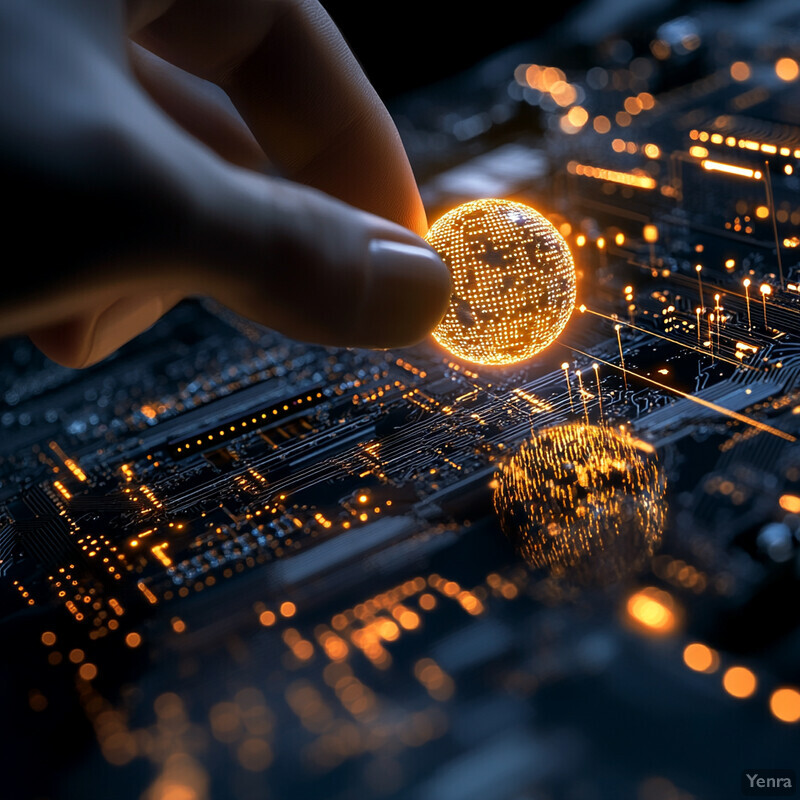
A notable example of transfer learning in QEC is the DeepMind/Google decoder that was first trained on simulated noise data and then adapted to real hardware. Initially, the neural decoder was trained on an approximate noise model for the surface code (with engineered features like “soft” measurement readouts) to reach a good starting point. When switched to Google’s Sycamore processor, it only needed a limited amount of experimental syndrome data to adjust its weights for the actual noise, rather than an exhaustive retraining. This small additional training sufficed for the decoder to handle the more complex true error distribution, demonstrating effective transfer from simulation to a superconducting qubit device. In a similar vein, researchers have suggested that reinforcement-learned QEC policies can be reused between different quantum setups. For instance, an RL agent that learned to optimize a code without any specific noise model could then be deployed on real hardware and continue learning there. One 2023 study noted that their RL framework could, in principle, tailor a discovered code to a physical device “without explicit characterization of the noise model,” implying that the agent’s prior learning of general error-correction principles would transfer to the device and refine itself in situ. These cases indicate that much of the heavy lifting in decoder training can be done in one domain (simulations or one type of qubit), and those insights can then be carried over and quickly adapted to new domains. This transfer learning not only saves time but also suggests an avenue toward universal or at least highly portable QEC solutions that work across different quantum computing architectures with minimal modifications.
18. Code Switching and Hybrid Codes
AI can enable dynamic code switching or hybrid error correction schemes, where different quantum error-correcting codes are used in tandem or alternation to best combat the noise at a given time. No single code is optimal for all noise types—some codes handle bit-flip errors better, others phase errors, some thrive under biased noise, others under symmetric noise. An intelligent system can monitor the error syndrome statistics and decide to switch to a code that is better suited if the error regime changes. Similarly, AI might orchestrate hybrid codes (e.g. embedding one code within another, or using a combo of techniques) to exploit the strengths of each. Such hybrid strategies could involve, for example, using a small code that corrects frequent trivial errors and a larger code for rarer large errors, or alternating between two codes depending on observed error patterns. The complexity of managing multiple codes or switching criteria is high, but machine learning algorithms are well-suited to learn these policies. By not being married to one code throughout a quantum computation, adaptive code-switching ensures that the error correction method remains optimal as conditions vary, thereby maintaining lower logical error rates than a static approach could.

Evidence for the benefit of tailored code strategies comes from both simulations and theoretical studies. The reinforcement learning discovery of the $[[17,1,3]]$ code in 2023 is a prime example of identifying when a non-standard code outperforms traditional codes under specific noise conditions. That code had a lower distance than the surface code yet provided better logical protection in the presence of biased noise, essentially because it was a hybrid construction optimized for that bias. This suggests that switching to a differently structured code when noise bias shifts can indeed yield superior results. In another vein, the adaptive approach by Das & Ghosh (2025) can be viewed as a form of code switching on the fly: on days when certain qubits are too error-prone, their method effectively “switches off” those qubits from the code (equivalent to using a smaller code on those days), whereas on days with lower noise, more qubits (a larger code) are used. This variability in code size—chosen based on the noise of the day—mirrors the philosophy of code switching to match current conditions. Practically, one could envision AI deciding between entirely different codes as well (e.g. running an XZZX surface code during periods of high dephasing noise, then switching to a rotated surface code if the noise becomes more balanced). Although full demonstrations of code switching in experiment have yet to be realized, preliminary results like the above reinforce the concept: an AI-informed selection of code or error correction scheme, potentially changing over time, can significantly boost fault-tolerance by always deploying the right tool for the job.
19. Multi-Parameter Optimization
Quantum error correction involves balancing many competing parameters – qubit overhead, gate count, decoding time, error suppression, etc. AI excels at multi-objective optimization in such high-dimensional spaces. By encoding multiple goals into a reward function or using techniques like Pareto optimization, AI algorithms can search for QEC solutions that provide the best trade-offs. For instance, one might want to minimize the number of extra qubits and keep the logical error below a certain rate and minimize the latency of correction. These objectives conflict (using fewer qubits usually raises the error rate, for example), but AI can explore combinations to find sweet spots that human designers might miss. The outcome is a set of solutions, each optimal in a different balance of metrics, from which engineers can choose according to priorities. This holistic optimization ensures no single aspect of QEC (like achieving a low error rate) is improved to the extreme without considering the cost to others (like enormous overhead or impractical waiting times). In short, AI provides a systematic way to navigate the complex design landscape of fault-tolerant quantum computing and output solutions that are globally optimal across multiple criteria, rather than optimal in one metric at the expense of others.

A recent example of multi-parameter optimization via AI is the work by RIKEN researchers in improving the Gottesman-Kitaev-Preskill (GKP) bosonic code. In 2024, Zeng, Gneiting, Nori and colleagues applied deep learning to optimize GKP quantum states, aiming to maximize error correction performance while minimizing the required squeezing and resources. Squeezing is difficult to implement experimentally, so their algorithm sought a balance: it found slightly modified GKP states that retained high error-correcting power but needed less squeezing (i.e., lower resource overhead). This implicitly solved a multi-objective problem – improving fault tolerance and reducing physical resource demands – using a neural-network-based optimizer. Similarly, the dissipative QNN approach by Lin et al. (2024) tackled multiple goals: it not only mitigated error propagation and improved fidelity but also reduced the need for frequent measurements (classical interaction) and extra qubits. By framing these as optimization targets, their AI model found a protocol that offered a superior overall balance than prior art (which might have minimized one metric, like error, but at the cost of many more qubits or operations). These instances highlight how AI can juggle the demands of quantum error correction design. By concurrently optimizing over several metrics – error rates, qubit counts, gate complexity, etc. – machine learning tools can identify innovative QEC solutions that push on all fronts, inching closer to practical fault-tolerant quantum computing without an explosion in resource requirements.
20. Scalable and Generalizable Solutions
A major promise of applying AI to quantum error correction is the development of solutions that scale to the huge qubit counts of future quantum computers and generalize to different error conditions. Traditional decoding algorithms often face exponential slow-downs as code distances grow. In contrast, machine learning models (once trained) can often operate in time that grows more gently with system size, and they can be trained on diverse data to handle a variety of noise patterns. By learning from large-scale simulations and varied scenarios, AI decoders aim to be universal in a sense—effective across a range of devices and error models, not just narrowly tuned to one case. Moreover, as we increase code size (hundreds to thousands of qubits per logical qubit), AI approaches can leverage parallelism and hierarchical learning to manage the complexity, whereas many classical methods become impractical. Ultimately, scalable and generalizable QEC solutions mean that as quantum hardware grows, the error correction overhead grows sub-linearly (or at least manageably), and one does not need to reinvent the wheel for each new machine. AI-driven QEC that continually improves with more training data will ideally keep up with hardware advancements, making reliable large-scale quantum computing achievable.
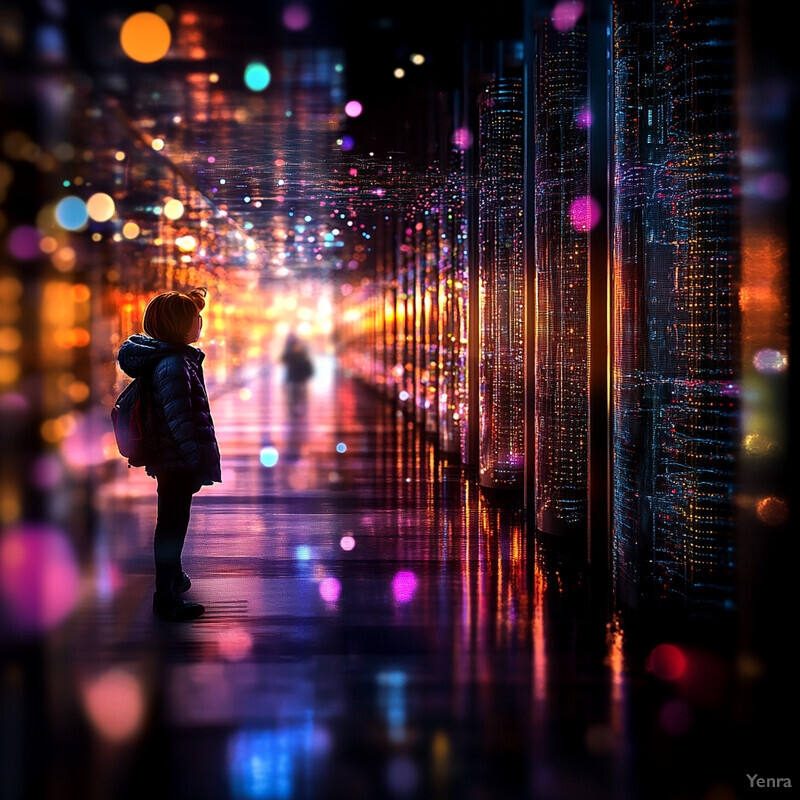
The feasibility of scaling AI decoders has been demonstrated by several recent works. The neural network decoder by Gicev et al. (2023) showed near-constant execution time with respect to code distance—its inference time did not blow up even when decoding a surface code of distance 1001 (over four million physical qubits). This is in stark contrast to most conventional decoders, which would be far too slow or memory-intensive at that scale. The ANN’s ability to handle such a vast code with fixed computational resources is a strong indicator of scalability. On the generalization front, the comprehensive 2024 survey on AI for QEC noted that machine learning decoders tend to offer a flexibility that many traditional methods lack. Once trained, an ML decoder can often be deployed on larger codes or slightly different error models with minor adjustments, whereas classical decoders typically must be re-derived or re-tuned. For example, convolutional neural network (CNN) decoders have been shown to adapt to various noise scenarios by appropriate training data augmentation, maintaining high accuracy without bespoke modifications for each scenario. As quantum systems scale up, researchers emphasize that classical decoding methods requiring exponentially growing resources will become impractical, whereas learned decoders can exploit patterns and structural locality to remain efficient. In essence, as we feed more data (from bigger codes and different devices) to AI decoders, they learn to handle that complexity, exhibiting performance that suggests they can meet the demands of thousands or millions of qubits. This capacity to scale with the problem size and generalize across conditions is why AI is expected to be integral to the error correction of tomorrow’s large-scale quantum computers.